WHAT IS IT
Audi’s first fully electric SUV, larger than the mid-size Q5, slightly smaller than the seven-seater Q7. It’s due in Australia around the middle of 2019.

WHY WE’RE TESTING IT
Audi has the jump on its German premium-brand rivals, making the E-Tron a hugely significant vehicle. The company has ambitions to make one third of its global production electrified by 2025, so this debut offering needs to pave the way and convince customers of the merits of an electric powertrain.
MAIN RIVALS
Jaguar I-Pace; Tesla Model X, Mercedes-Benz EQC (due late 2019)
THE WHEELS REVIEW
ON THE face of it, this first drive had the makings of a modern-day Western. An outsider in an arid and inhospitable land; sideways glances from a few slightly suspicious locals; an unspoken struggle between the past and the newcomer’s claim on the future. High up in the parched Hajar mountains that divide Abu Dhabi from Oman, we really needed a soundtrack of tumble weeds and perhaps a lone steel guitar. Instead, we had a soundtrack of … nothing.
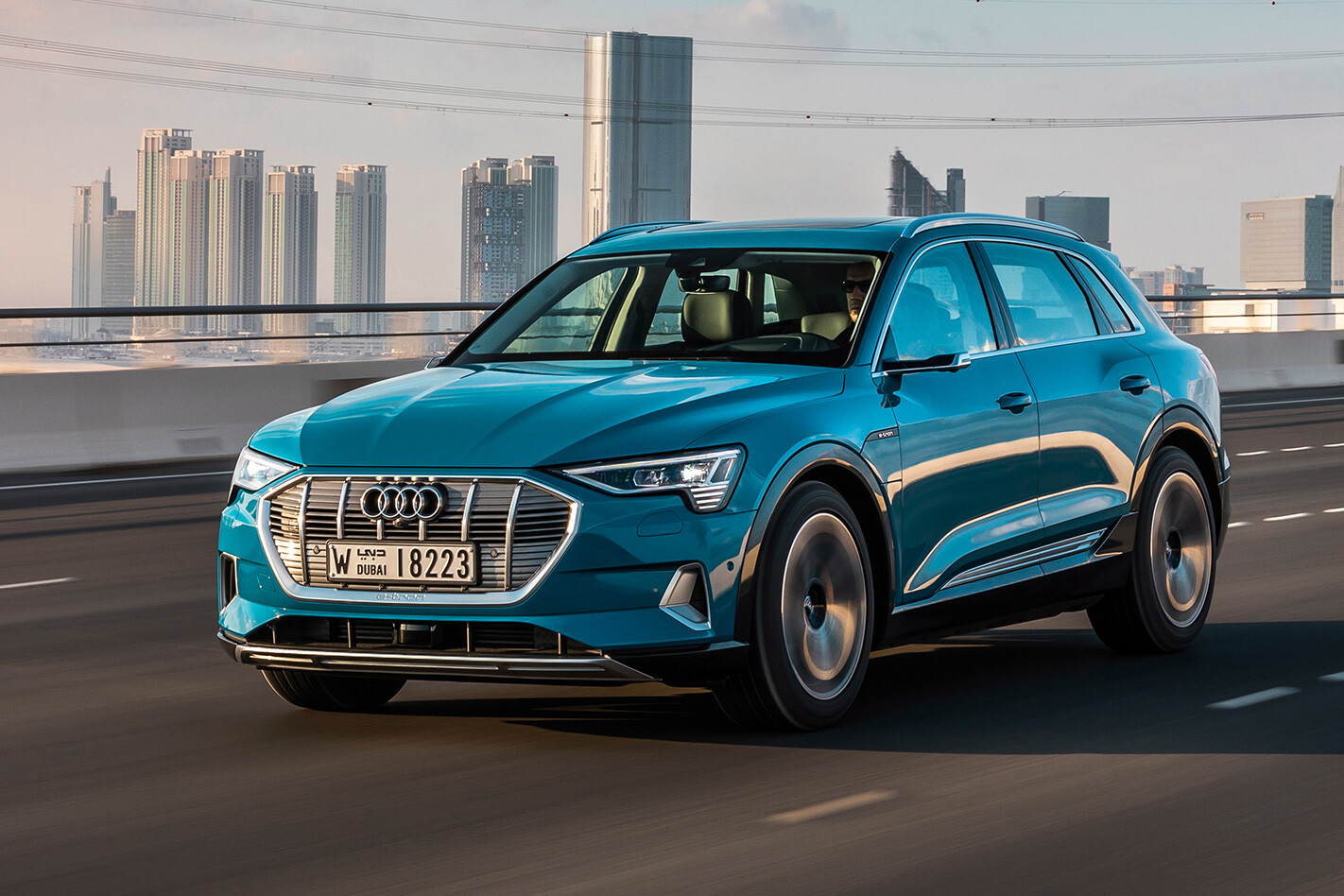
Well, not quite silence. When you demand full acceleration from the Audi E-Tron’s two electric motors, a cocked ear will detect a faint mechanical whir, but the sound is so muted it’s almost like hearing someone using an electric toothbrush from behind a closed bathroom door. Very quickly, if the audio system is off, tyres on pavement and air moving over the car’s slippery exterior are the sounds you (only just) notice.
This was not our first experience of Audi’s debut EV: Wheels rode in a pilot-build car at Pikes Peak (September issue), but this was our first chance to drive the production version, on the flat lands around Abu Dhabi, up the mighty Jabel Hafeet mountain road, and over some not-too-gnarly off-road terrain.
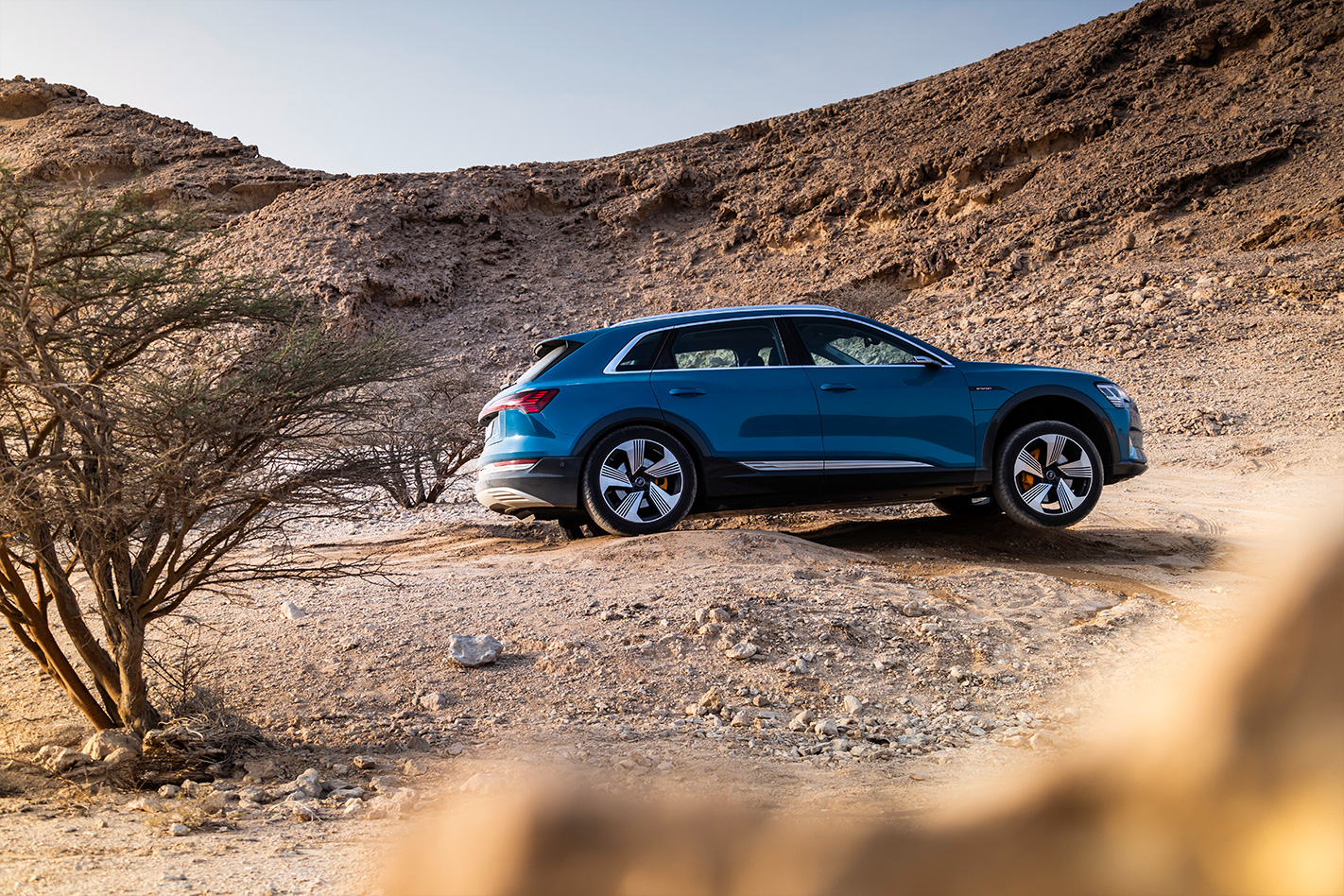
It’s a mostly super-impressive debut, and when E-Tron arrives in Australia around the middle of 2019, it looks set to batter Tesla’s Model X in the course of going toe-to-toe with Jaguar’s I-Pace and the Mercedes-Benz EQC.
Size-wise, E-Tron is slightly bigger than stablemate Q5, but a little smaller than Q7. The packaging advantages of the electric drivetrain mean rear-seat room is generous, and the extra length (219mm) over I-Pace translates to appreciably better rear legroom than the Jaguar.
It’s impossible to ignore the I-Pace when talking about E-Tron, as the Jaguar has beaten Audi to market by about seven months, and the two luxo EV offerings are similarly priced. When the E-Tron arrives, it’s expected to sell for around $140,000, putting it in the upper end of the $120-140K zone straddled by the three-tiered Jaguar line-up.
Yes, any way you cut it, $140,000 is a hefty wedge for an Audi SUV, given that just under $100K gets you into the swift, well-sorted SQ5 quattro. That’s fully 40 percent more for an electric SUV that delivers broadly similar on-road performance, and there’s no way that the lower running costs of an EV will see an owner save anything close to the price premium over a typical ownership period. Still undeterred? Excellent.
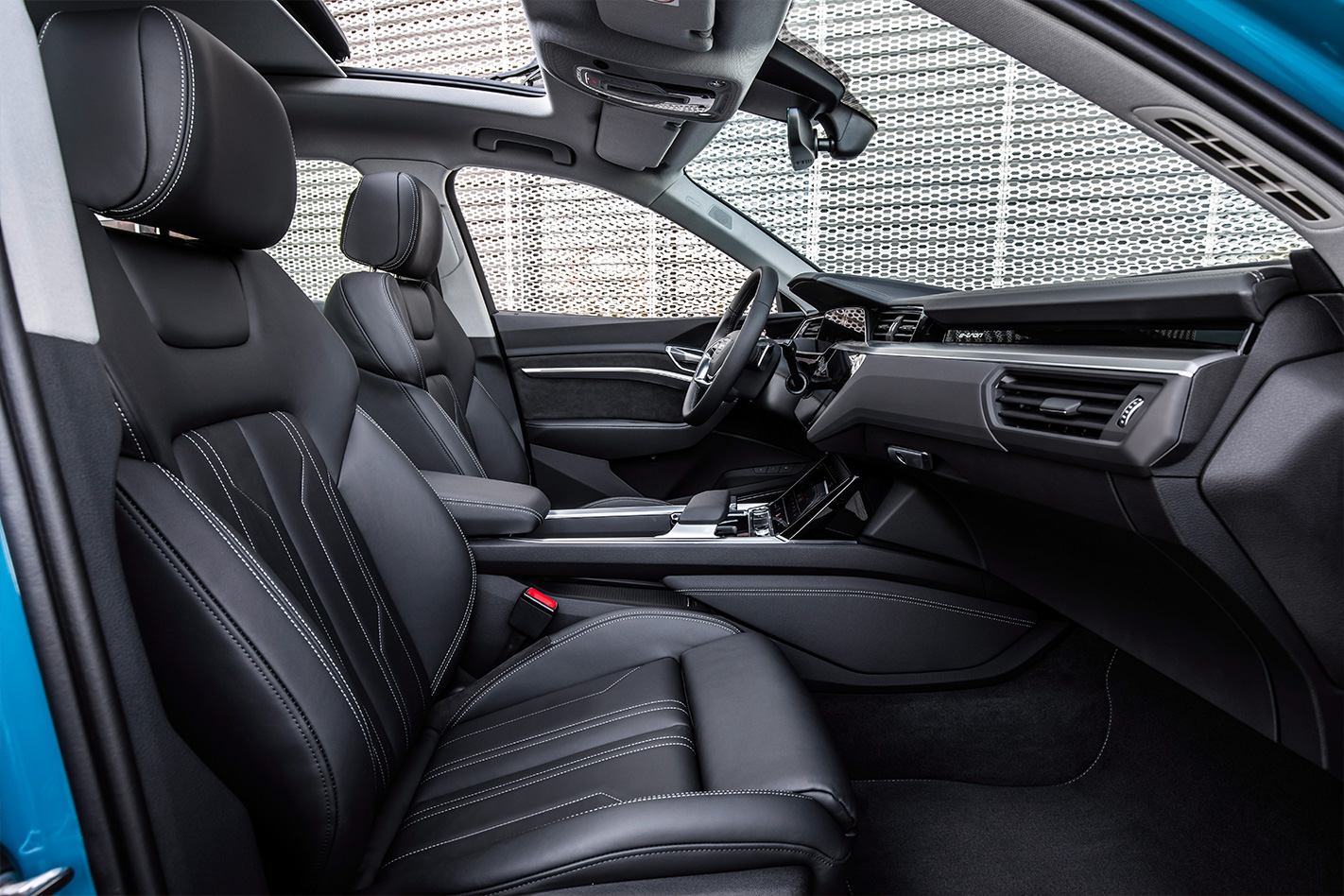
Unlike the I-Pace, which deliberately blurs segments and stylistic boundaries, the E-Tron’s exterior design treads far safer ground. Its integration into the Q-series SUV line-up is clear, but it sports a more hunkered down, stylised form that alludes to its forward-thinking aspirations. The deep sculpting of the lower sills, for example, is intended to visually highlight the fact that this is the area in which the car’s power source is packaged. And those (optional) exterior cameras, which replace air-disturbing mirrors, are all very Tron. It’s slippery, too – aerodynamic measures include active shutters in the upper grille and lower fascia to control the airflow depending on the cooling needs of the batteries, motors, and HVAC, as calculated by the complex plumbing system that circulates 22 litres of fluid through the arteries of the car.
Liquid cooling, according to Audi’s powertrain engineers, is essential to the car’s ability to deliver consistent hard acceleration. E-Tron is powered by two motors; one driving the front axle; a slightly larger one driving the rear. Combined, their output is rated at a nominal 265kW and 561Nm, however, both can operate in a ‘boost’ mode for a maximum of eight seconds to deliver a combined output of 300kW and 664Nm. In normal driving it’s the rear motor which handles the bulk of the grunt work, but electronic control allows the front motor to phase in and out as required depending on load, cornering force and available traction. All this occurs in a claimed 30 milliseconds, leaving a comparable quattro powertrain napping.
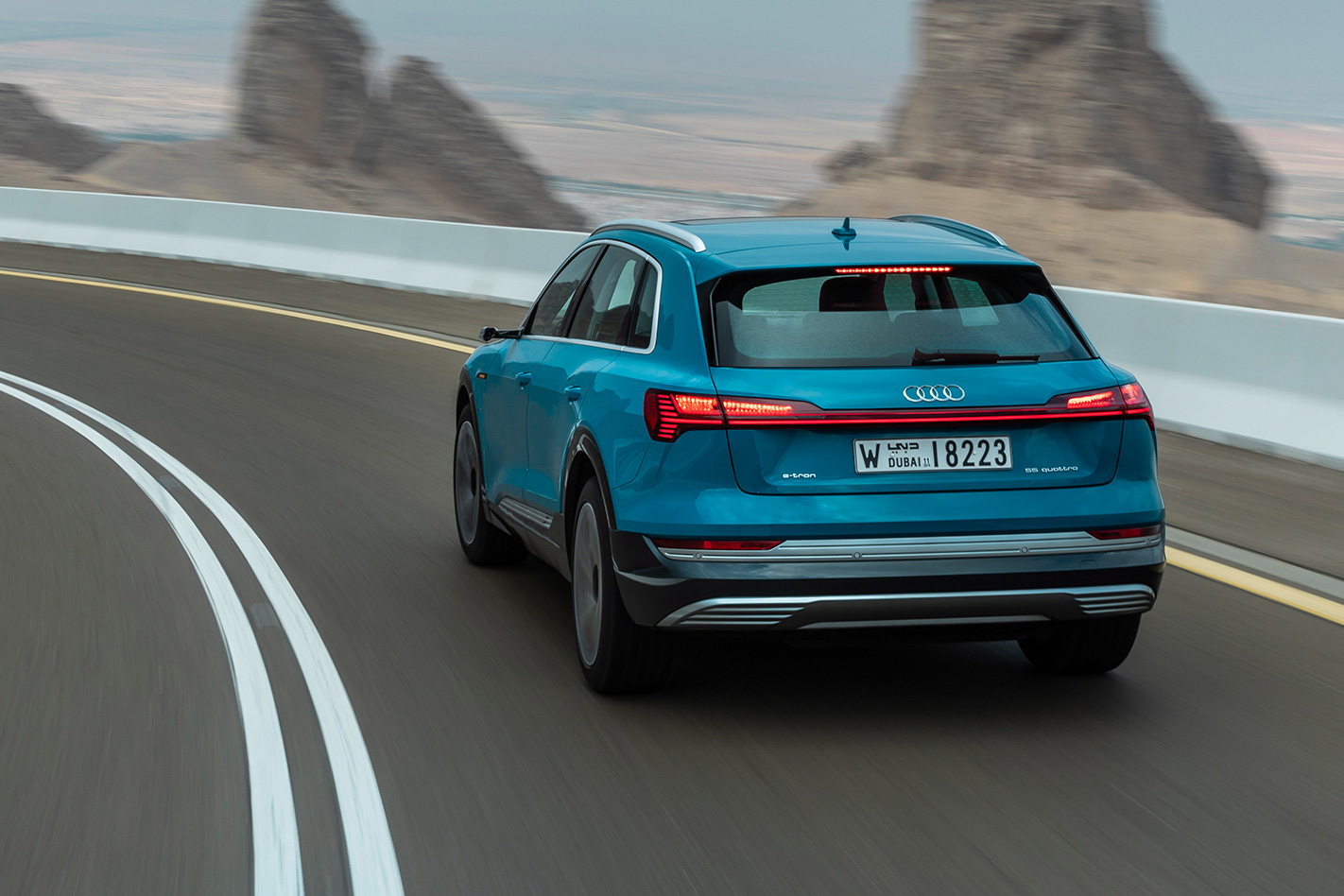
Feeding these two motors is a 95kWh battery pack (made up of 36 modules), which is sandwiched in the floor. This 700kg unit has a 150kW DC fast-charge capability, giving it a theoretical charge-speed advantage over the I-Pace. For the road-tripping E-Tron owner needing to replenish the battery away from their home wallbox supply, the time required to achieve an 80 percent charge is around 30 minutes.
So how does it drive? The challenge for us motor-scribbler types when evaluating the new breed of EVs is actually being able to deliver some kind of meaningful powertrain assessment that separates one competitor from the other. Fact is EV powertrains are brilliantly effective at the fundamental task of converting a driver’s intention and input into the desired motion. Critiquing them is the harder bit. And with no conventional transmission, there’s one less thing for us critics to moan about: no dual-clutch stumbles at low speed, no hesitation of a torque converter auto reluctant to kick down, or revving its nuts off in a too-aggro Sport mode.

Nor is there much definable ‘character’ to dissect in terms of torque delivery, power curve or throttle response. Squeeze the go pedal and a premium EV just … goes. And so it is with the E-Tron. Okay, it’s possible that the Audi has an even greater level of mechanical noise suppression than that of the I-Pace. Beyond that, fundamentals such as the torque-to-weight ratio become more telling than anything else. In boost mode, E-Tron has 266Nm/tonne, versus I-Pace at 326Nm/tonne; numbers which help explain the near-one-second gap in their respective 0-100km/h claims. Still, the E-Tron feels swift enough at 5.7 seconds, while also feeling quicker than our (hand-timed) 3.5sec 80-120km/h overtaking acceleration figure.
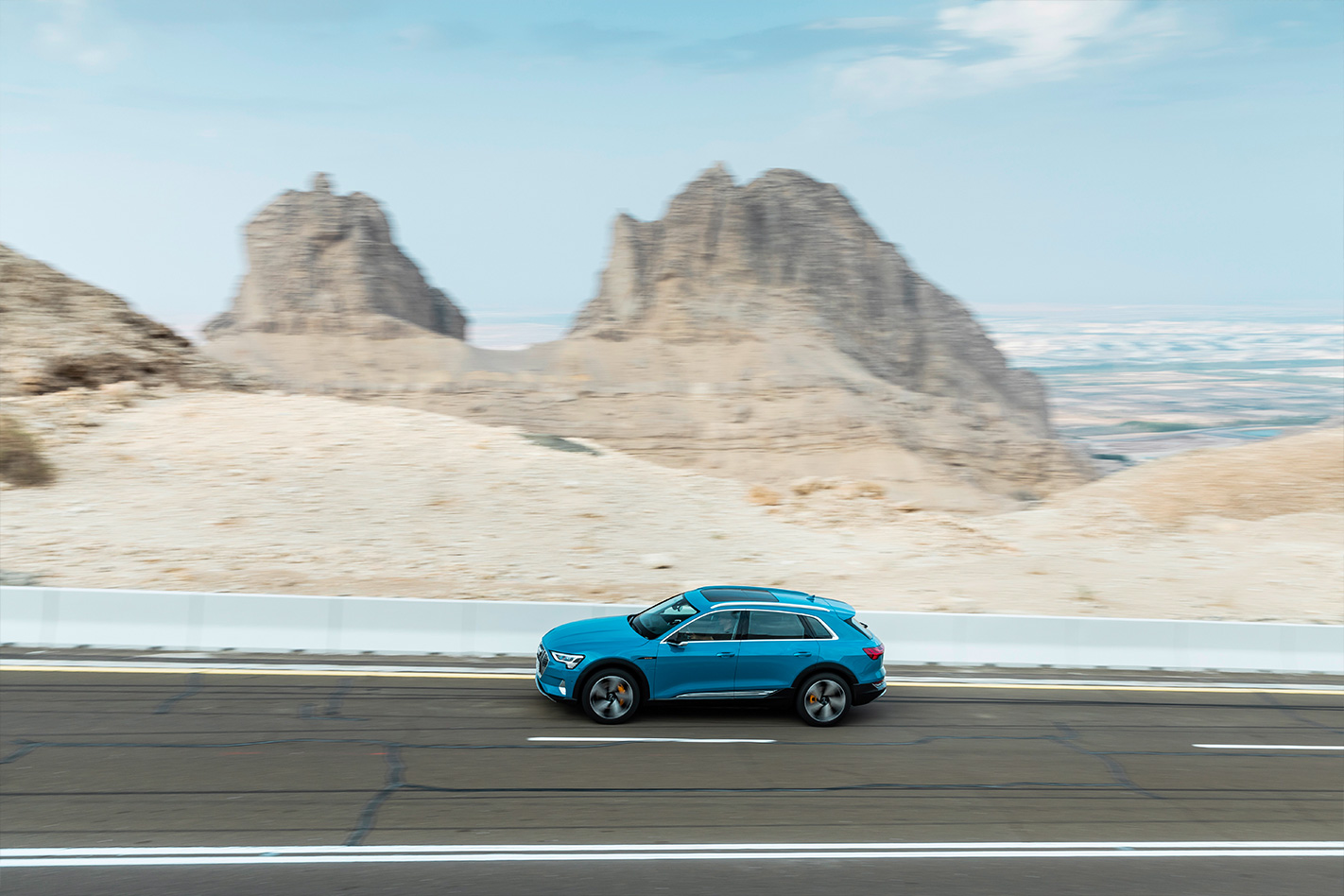
But it’s the near-instantaneousness of the response and the sense of effortless surge within a vacuum that’s more impressive than the hard numbers. The way this thing will sling you from a rolling start of say 40km/h, deep into triple digits, is properly addictive. The inherent stealth also has its own appeal. Rather than lamenting the lack of engine note, I quickly began to appreciate the absence of any aural giveaway as to exactly how hard you’re pinning the throttle each time you see some clear air. Your mother-in-law will barely look up from her Candy Crush as you slay dawdling traffic.
Driving like this will, of course, suck down those stored electrons. Audi claims a range of ‘over 400km’ on the WLTP cycle, but good luck achieving it. We saw our initial predicted range of 383km at full charge plunge to 230km after only 70km of fairly spirited driving, with claimed consumption averaging 28.5kW/100km. A more likely real-world range on a full charge will probably be in 310-340km zone. Will this be enough for most owners? Given that’s around three hours’ highway driving, the likelihood is that your bladder and your kids are will demand a break before you’d probably drive much further anyway.
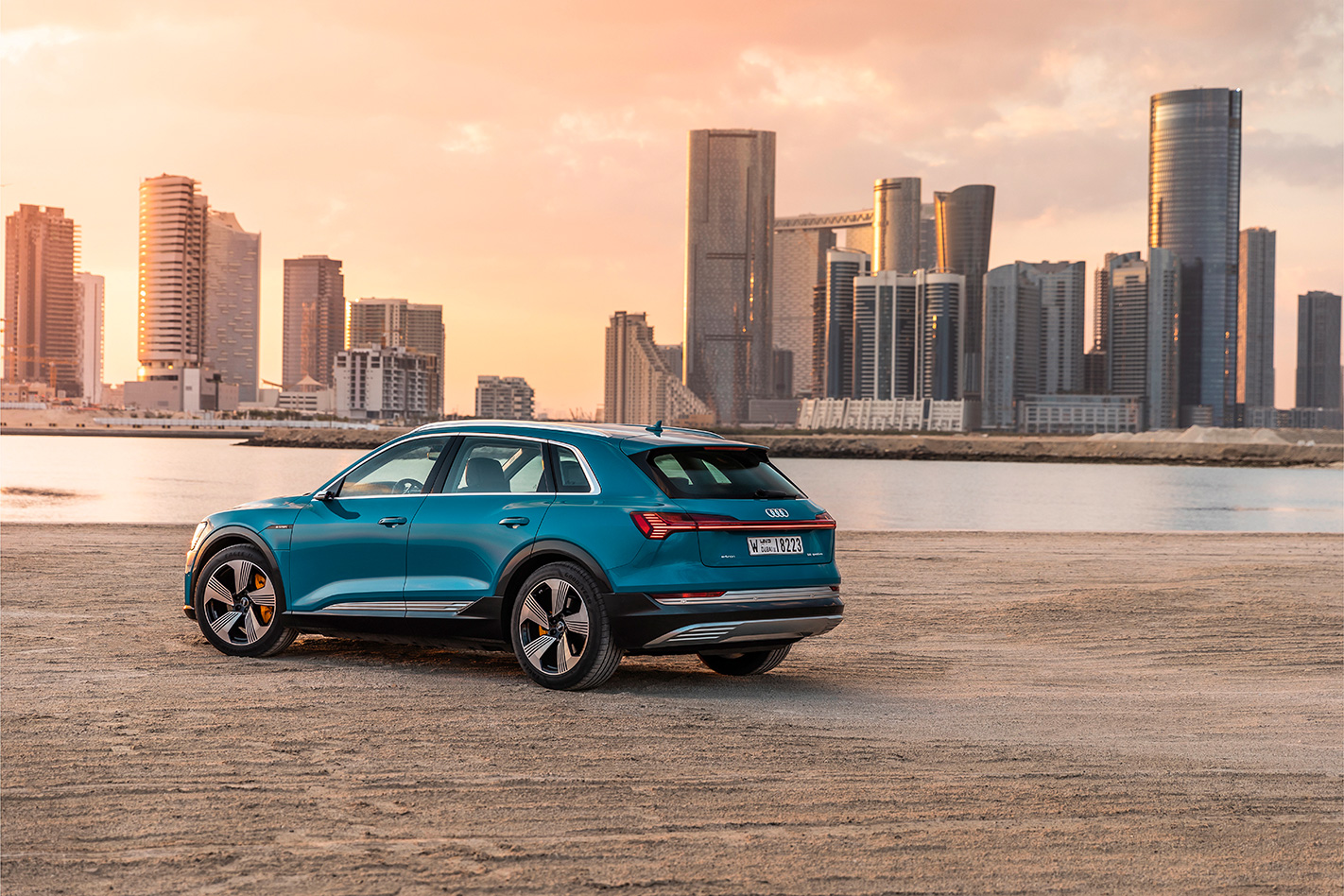
As for dynamics? First impressions are that the E-Tron’s extra weight compared with the I-Pace feels evident in corners and the Audi doesn’t quite match the Jag’s general athleticism. Driving the E-Tron hard on the amazing Jabel Hafeet mountain road on the outskirts of Al Ain in the UAE – a glassy three-lane ribbon of bitumen which climbs to an elevation of over 1200m in just under 12km – was memorable, but also an exercise in managing weight transfer and allowing a generous margin in the braking areas. The steering is quick; precise, but over-assisted at low speed, and not exactly organic in terms of feel. Also, despite the torque split, the E-Tron never feels rear-driven. Instead, it gets the electric grunt down with almost clinical all-fours efficiency, and the low centre of gravity helps give it a mostly neutral stance until you really start muscling the nose in tighter turns.
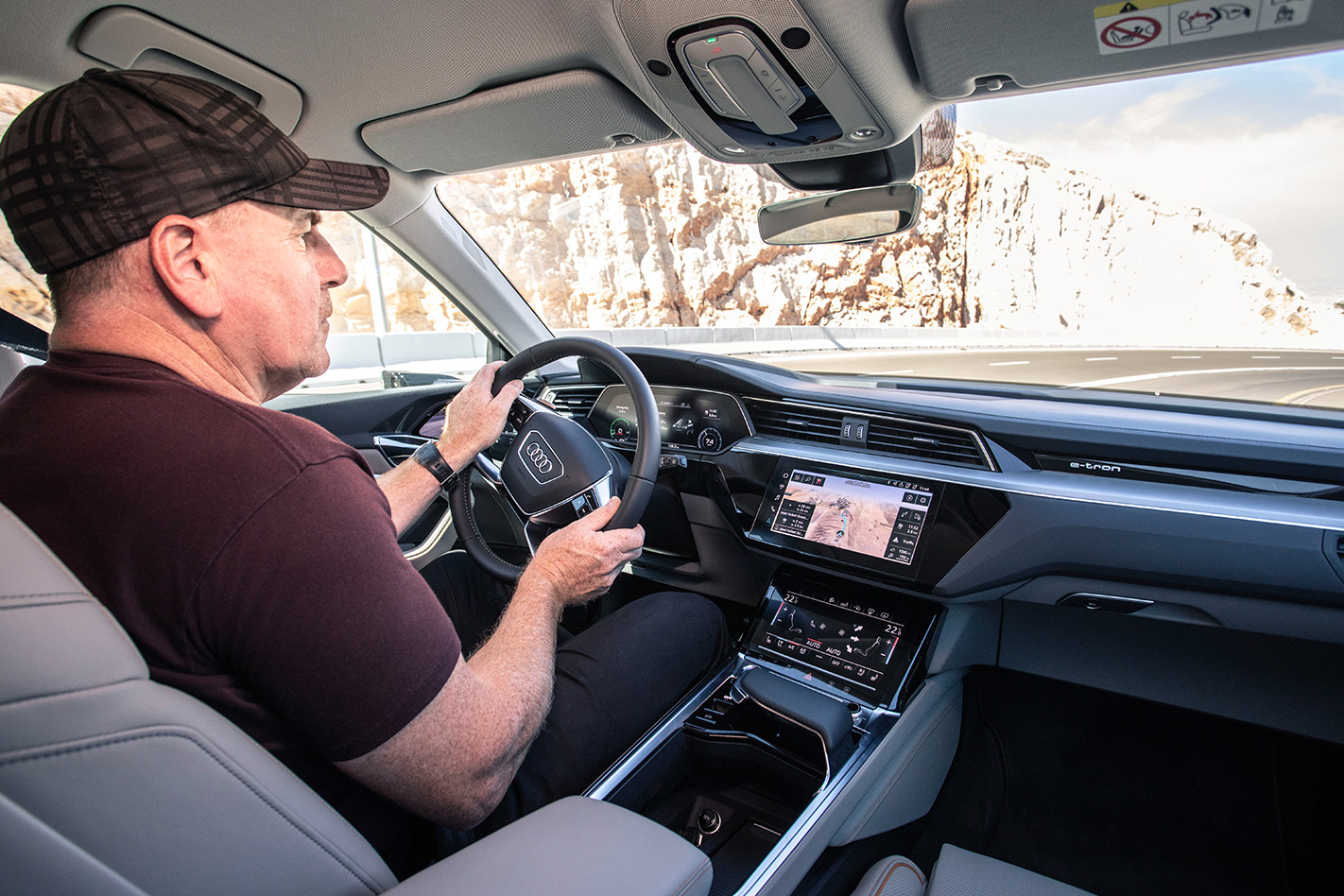
But more relevant to most owners will be the E-Tron’s exceptional cruising ability. Wind noise is brilliantly suppressed, and the car is happy to coast on a light throttle, the re-gen system able to be set via wheel paddles to be quite subtle on downhill gradients, despite its efficiency in capturing kinetic energy to charge the battery.
It all makes for utterly tranquil road-tripping, especially combined with the E-Tron’s fine ride. The combination of a long wheelbase and standard-fitment height-adjustable air suspension means it delivers real pliancy, even on the 21-inch wheels fitted to the test cars. There’s also a high-riding off-road mode that allows exploration of mildly rutted or rocky terrain, if you’re willing to chance the tyres.
So, on balance, E-Tron emerges as deeply convincing, even if it can’t quite claim to reset the existing benchmarks set by its fledgling EV opposition. Now we await the arrival of Merc’s EQC, due late 2019, for the real high-noon showdown in EV land.

THE WHEELS VERDICT
Deeply impressive in terms of refinement, interior presentation and function, roominess and general user friendliness. The fact the E-Tron’s performance and range does not trounce that of Tesla’s Model X, which has been in market since 2015, highlights the challenges faced by manufacturers of EVs in terms of batteries, energy storage and weight. Still, the E-Tron makes a superb family car, offering effortlessly swift performance, and, once the fast-charging network is fully rolled out, adequate range for touring holidays.
PLUS: Styling; powertrain refinement; ride; cabin quietness; equipment; packaging MINUS: Heavy; range not standard-setting
SPECS
Model: Audi E-Tron Motors: 2 x asynchronous Max power: 300kW (boost mode) Max torque: 664Nm @ 0rpm Transmission: single-speed reduction Weight 2490kg 0-100km/h: 5.7sec (claimed, boost mode) Economy: 28.5kW/100km (on test) Price: $140,000 (estimated) On sale: Q2, 2019






